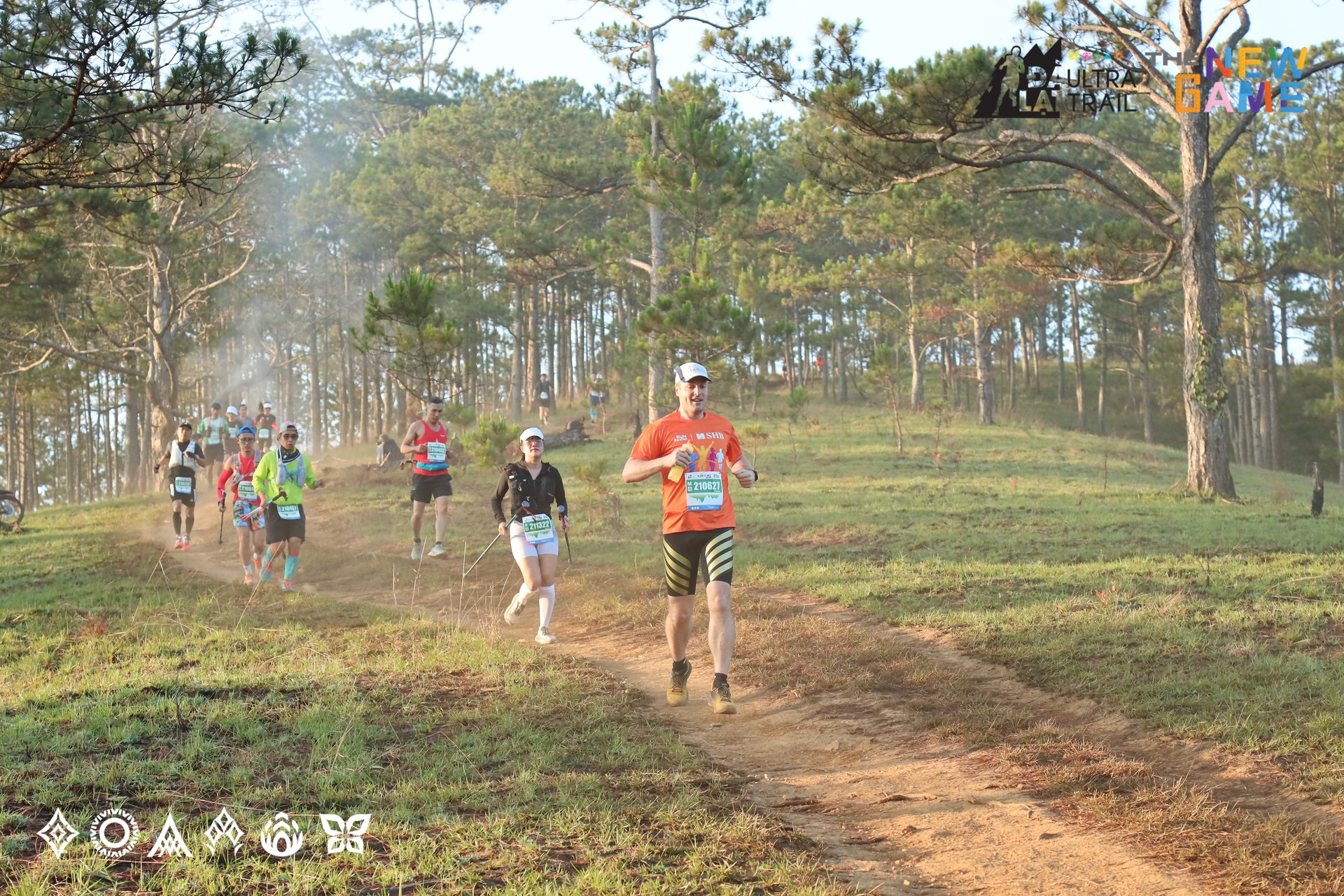
11/03/2025
4 TRAIL RUNNING TIPS FOR BEGINNERS
Discover valuable tips from a trail running expert on gear and training methods for beginners.
Trail running for beginners isn't as difficult as it seems, provided you're equipped with the necessary knowledge and gear. So, how can new runners confidently hit the trails? Let's explore these four tips with Vietnam MTB Series.
1. Find the right trail running shoes
Using road running shoes on trails can easily lead to ankle injuries, while trail running shoes feature a low profile, deep lugs, high traction, and appropriate responsiveness for a variety of terrains.
A suitable pair of shoes is the most fundamental piece of equipment for new trail runners, helping to increase flexibility and prevent unnecessary injuries.

The right trail running shoes is really important for beginners (Nguồn ảnh: Mammut)
2. Don't forget strength training
For beginners, strength training improves overall health, stability, and running speed. It also helps you identify ankle imbalances on uneven terrain.
Depending on their training goals and endurance, runners can incorporate supplementary exercises like single-leg squats, weighted lifts, lateral lunges, or skater jumps. These exercises enhance stability, balance, and confidence when navigating challenging landscapes.
Additionally, you can also check out some core training to get more confident on the trails.

Strength training exercises to boost fitness for trail runners (Image Source: CNN Health)
3. Find a place to run
Beginners in trail running don't always need to train on rugged mountain trails. If you live in a city, you can start with a variety of readily available terrains like parks, cobblestone paths, or riverbanks. This helps improve spatial awareness and gets you accustomed to unstable surfaces. To train for steep inclines, try climbing stairs or using a treadmill with an incline at the gym.
Additionally, to get a feel for real trails, you can try the City Trail Series by Vietnam MTB Series, which combines familiar road running with new and exciting trail sections. This can be a transitional step to prepare you for more challenging trail races.
4. Get appropriate trail running gear
A basic outfit for trail running includes a moisture-wicking base layer to keep your body dry, a thin mid-layer for warmth, a waterproof jacket for wind and rain protection, and fitted, quick-drying shorts or tights without seams that cause chafing.
For materials, choose specialized synthetics like polyester or merino wool instead of cotton to ensure better sweat absorption.
In addition, if you’re running a long-distance trail race, make sure to bring all the essential gear, including water, snacks, sunglasses, a hat, your phone, and a running watch to ensure a safer journey. If you need to move in the dark, don’t forget to carry a headlamp to maintain visibility.

Trail runners need to be fully equipped to ensure safety on the course.
In conclusion, starting trail running isn't daunting if you're well-prepared. From selecting the right gear and building strength to finding suitable training locations, these steps will help you confidently conquer nature. Apply these tips now to have a safe and memorable trail running experience!
(References: RUNNERS' WORLD, Central Performance, RUN MOTION, Go Outdoors)


